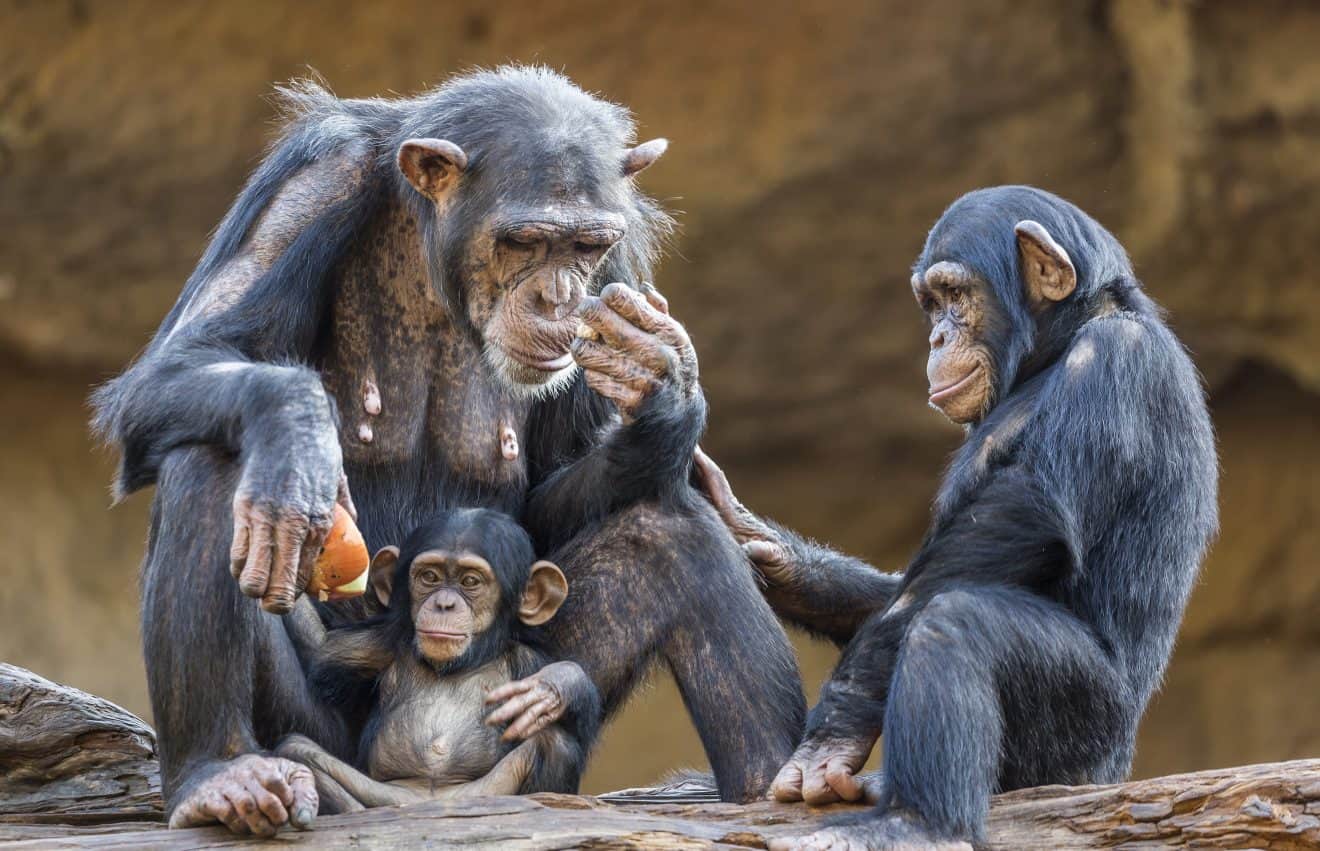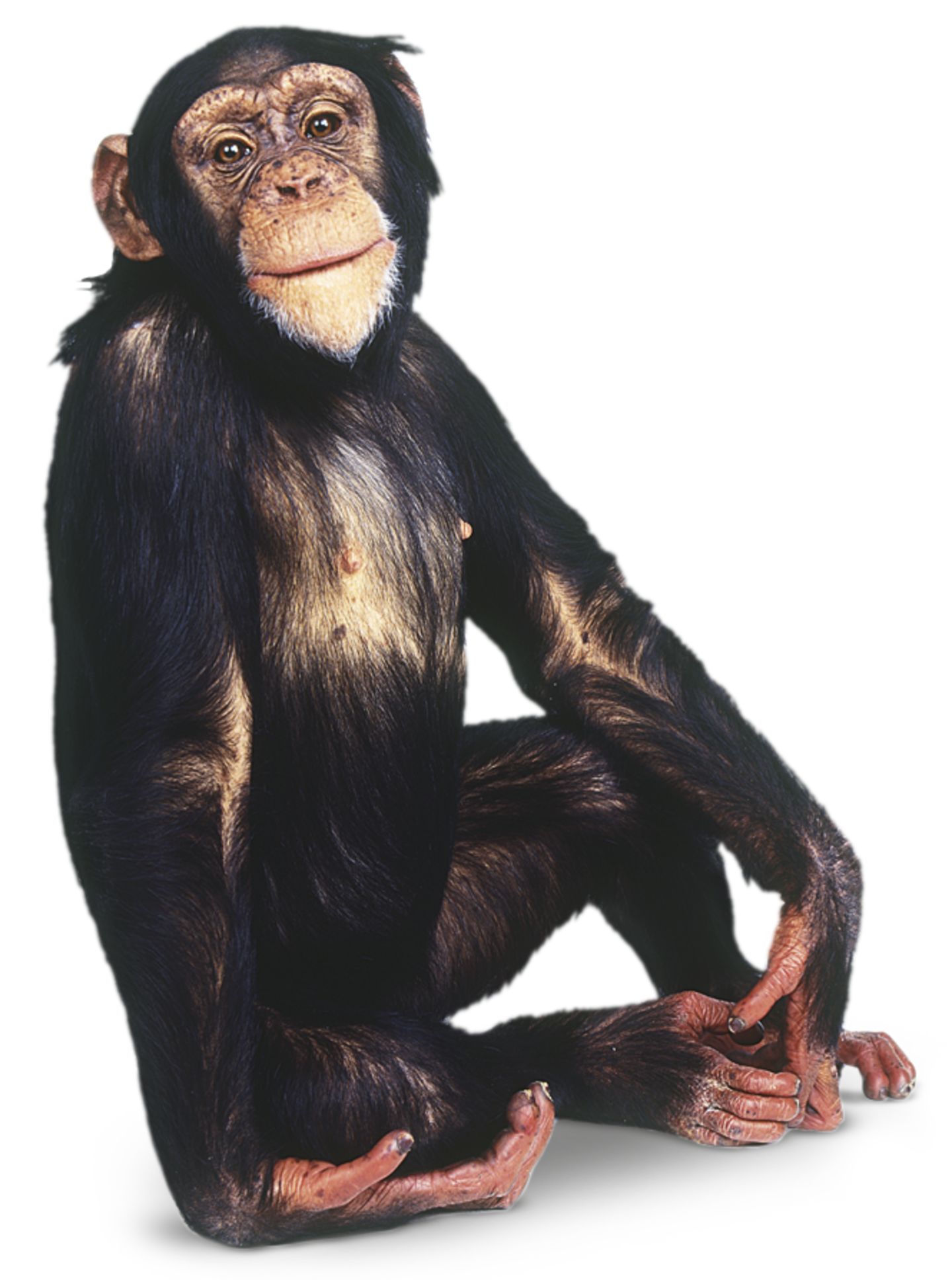
RANGEĬhimpanzees are found across a west-east belt in equatorial Africa. The average lifespan of chimpanzees is 40 to 45 years, though it is considerably longer for captive chimpanzees (Macdonald 2001). All chimpanzees build sleeping nests in trees at night (Rowe 1996). Chimpanzees are both terrestrial and arboreal, with the amount of time spent on the ground varying between study sites and between sexes (Doran 1996). Locomotion patterns include quadrupedal knuckle walking and occasional bipedalism. They have prominent ears and both males and females have white beards. Pan troglodytesĬhimpanzees are all black but are born with pale faces and a white tail tuft, both of which darken with age. Males and females have an average height of 816 mm (2.68 ft) (Rowe 1996). They have a more robust build than bonobos ( Pan paniscus) and are slightly sexually dimorphic with males, on average, weighing 40 to 60 kg (88.2 to 132 lb) and females, on average, weighing 32 to 47 kg (70.5 to 104 lb) (Rowe 1996). MORPHOLOGYĬhimpanzees exhibit very little morphological differences between subspecies. For example, by categorizing chimpanzees as Homo, it might be considered unethical to keep them in zoos or use them in research. The implications of changing the taxonomical categorization could have enormous impacts on how chimpanzees are perceived and the rights extended to them.

212: 394-425.Some argue that chimpanzees should be categorized in the same genus as humans, Homo, based on the fact that chimpanzees and humans diverged only 4 to 6 million years ago (Groves 2001). Source: Robson SL, Wood B (2008) Hominin life history: reconstruction and evolution. % subadult period left after reaching adult brain size Years from adult brain size to maturity (years) The phylogenetic relationship of chimpanzees to other primatesĪverage weight of adult chimpanzee brain: 384 g (0.85 lb)Īverage weight of adult human brain: 1,352 g (2.98 lb)Ĭomparison of human and chimpanzee brain size growth (click on the images of the brains below to download) Habitat range in the wild: Equatorial Africa, from southern Senegal across the forested belt north of the Congo River to western Uganda and western Tanzaniaīody Weight: 40 to 60 kg (M), 32 to 47 kg (F)ĭownload STL files of chimpanzee and human brains to print 3D models Life span: 40 to 45 years (wild), more than 60 (captive) verusĬonservation Status: Endangered ( IUCN Red List) There are several other features of the chimpanzee brain that are more similar to humans than to other primates, including: 1) the ability to morphologically define both Broca’s and Wernicke’s area using similar landmarks to the human brain 2) the dense distribution of von Economo neurons in the anterior cingulate and frontoinsular cortex 3) a more complex level of connectivity and function within the arcuate fasciculus and mirror neuron systems. Furthermore, chimpanzees, like humans, also have a larger and more gyrified brain than other primates species. Chimpanzees have a prolonged developmental period between birth and adulthood during which socialization occurs and neural structure can be strongly influenced by the environment and learning.

Human and chimpanzees, nonetheless, share many cognitive, communicative, and emotional processes in common, based on similarities in their neurobiological structure and function.


Most of this difference reflects the evolutionary expansion of the neocortex in humans, particularly the association cortex, a group of regions that supports such sophisticated cognitive functions as language, self-awareness, and problem solving. Chimpanzees have brains that are one-third the size of human brains.


 0 kommentar(er)
0 kommentar(er)
